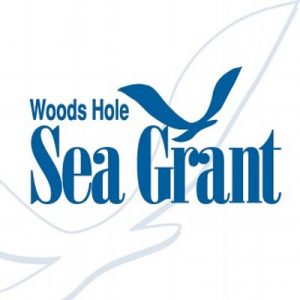Toxicity of Microplastics and Nanoplastics in the Marine Environment
The problem of plastic pollution in the ocean has captured the attention of the public, journalists, regulators, and scientists. The issue of greatest concern is the presence and potential impact of “microplastics”—small plastic particles less than ¼ inch in diameter, and their even smaller relatives, nanoplastics. Microplastics are now ubiquitous in the oceans and can be ingested by marine and freshwater organisms, including some consumed by humans as seafood. Despite the growing concern about marine microplastics and nanoplastics, there are many unanswered questions about their fate and impacts. We are pursing several small research projects to assess microplastic levels in coastal animals on Cape Cod, to determine the size-dependence of microplastic and nanoplastic uptake from the intestine, to assess the toxicity of plastic photodegradation products, and to understand inflammatory responses to microplastic exposure.
Our research on microplastics and nanoplastics has been informed by ongoing discussions with members of the WHOI Marine Microplastics Initiative.
Recent papers:
The Minderoo-Monaco Commission on Plastics and Human Health.
Landrigan PJ, Raps H, Cropper M, Bald C, Brunner M, Canonizado EM, Charles D, Chiles TC, Donohue MJ, Enck J, Fenichel P, Fleming LE, Ferrier-Pages C, Fordham R, Gozt A, Griffin C, Hahn ME, Haryanto B, Hixson R, Ianelli H, James BD, Kumar P, Laborde A, Law KL, Martin K, Mu J, Mulders Y, Mustapha A, Niu J, Pahl S, Park Y, Pedrotti M-L, Pitt JA, Ruchirawat M, Seewoo BJ, Spring M, Stegeman JJ, Suk W, Symeonides C, Takada H, Thompson RC, Vicini A, Wang Z, Whitman E, Wirth D, Wolff M, Yousuf AK, Dunlop S. (2023) Annals of Global Health 89: 23, 1–215.
Microplastics in Marine Food Webs.
Pitt JA, Aluru N, Hahn ME (2023)
In: Shumway SE, Ward E, editors. Plastics in the Sea: Occurrence and Impacts. (in press)
Human Health and Ocean Pollution.
Landrigan et al. (2020)
Annals of Global Health86(1): 1–64. (https://annalsofglobalhealth.org/article/10.5334/aogh.2831/)
See also previous papers authored by Jordan Pitt, a Ph.D. student currently working on nanoplastics in our laboratory.
Uptake, tissue distribution, and toxicity of polystyrene nanoparticles in developing zebrafish (Danio rerio).
Pitt, J. A., Kozal, J. S., Jayasundara, N., Massarsky, A., Trevisan, R., Geitner, N., Wiesner, M., Levin, E. D. and Di Giulio, R. T. (2018)
Aquat Toxicol 194, 185-194, 10.1016/j.aquatox.2017.11.017.
Maternal transfer of nanoplastics to offspring in zebrafish (Danio rerio): A case study with nanopolystyrene.
Pitt, J. A., Trevisan, R., Massarsky, A., Kozal, J. S., Levin, E. D. and Di Giulio, R. T. (2018)
Science of the Total Environment 643, 324-334, 10.1016/j.scitotenv.2018.06.186.
Funding Agencies
This research is being supported by Woods Hole Sea Grant, the Gerstner Foundation, and the Woods Hole Oceanographic Institution's Marine Microplastics Innovation Accelerator Fund, with support from March Limited.



Partners/Collaborators
The research is performed in collaboration with Jordan Pitt, Neel Aluru, Collin Ward, Anna Michel, Scott Gallager, and members of the WHOI Marine Microplastics Initiative.